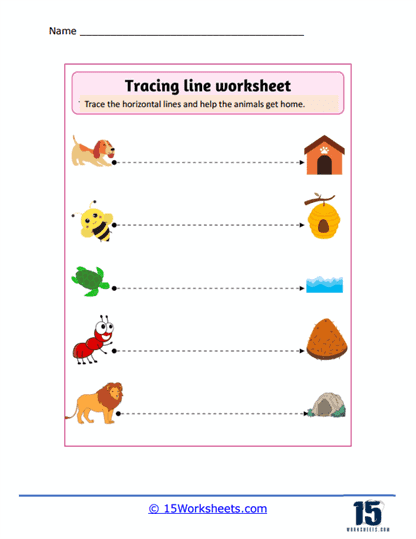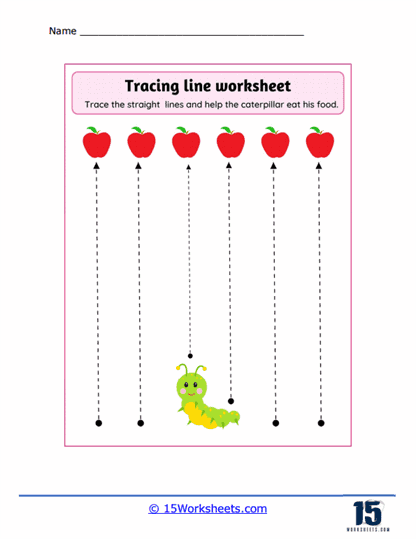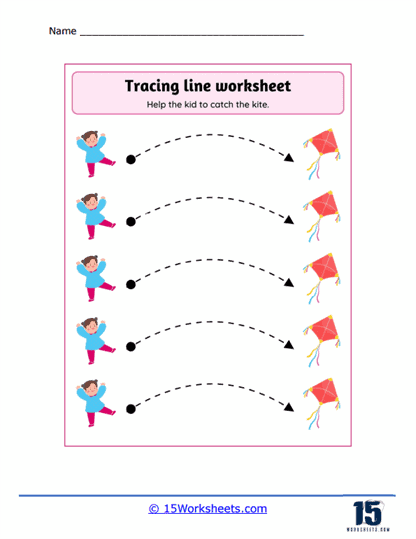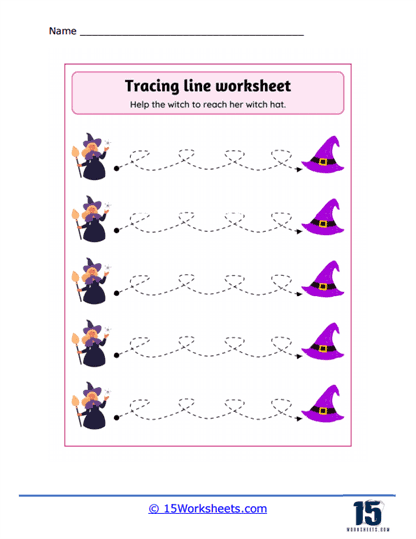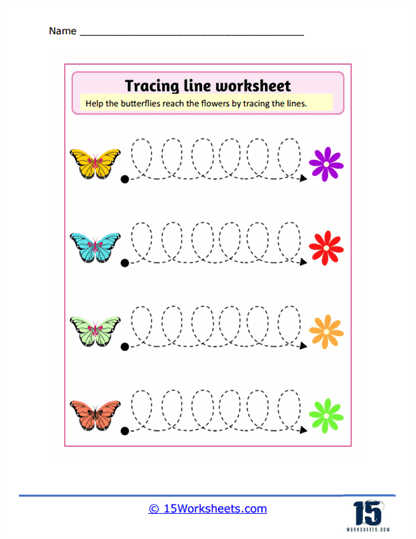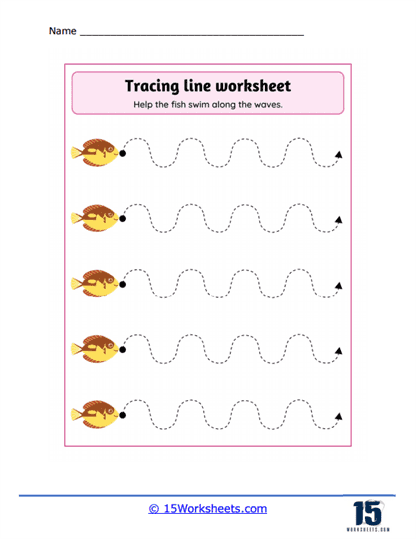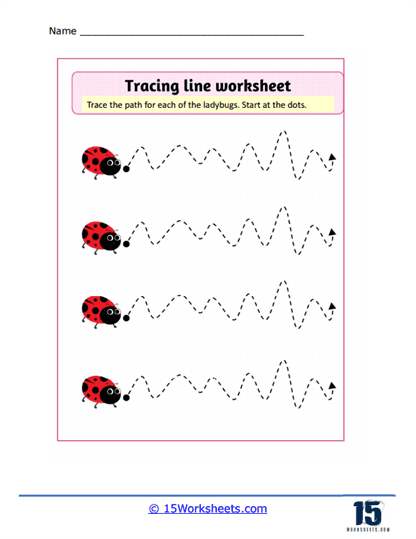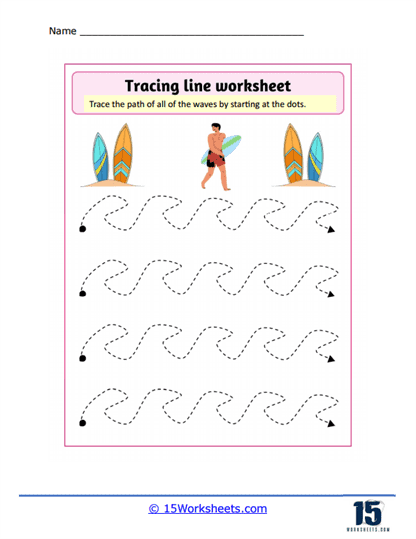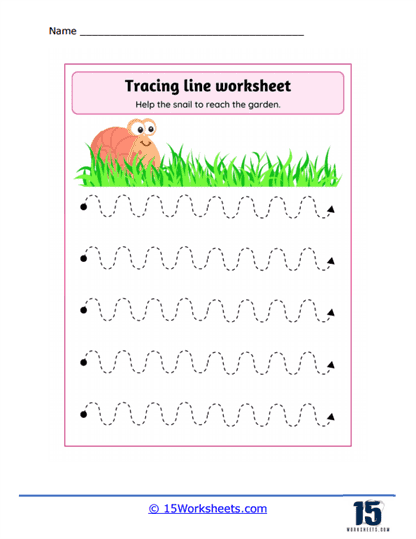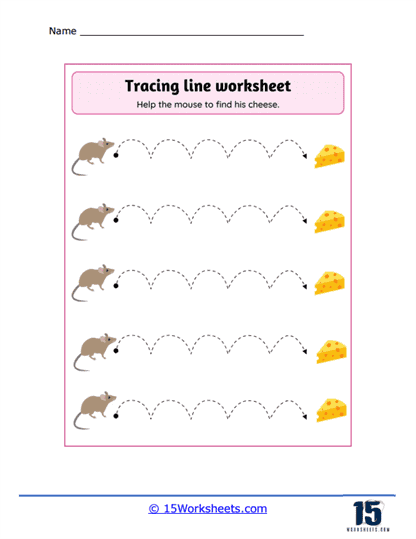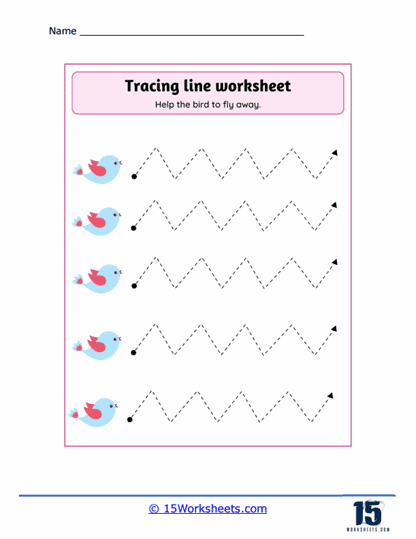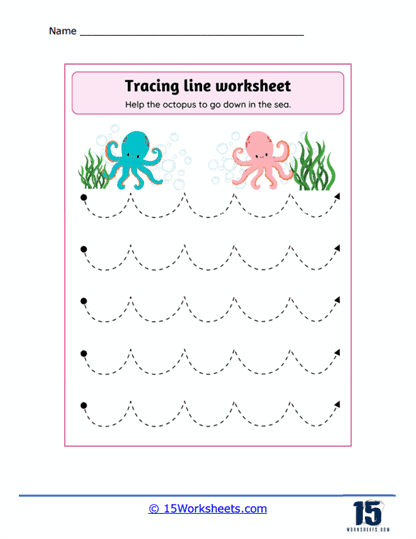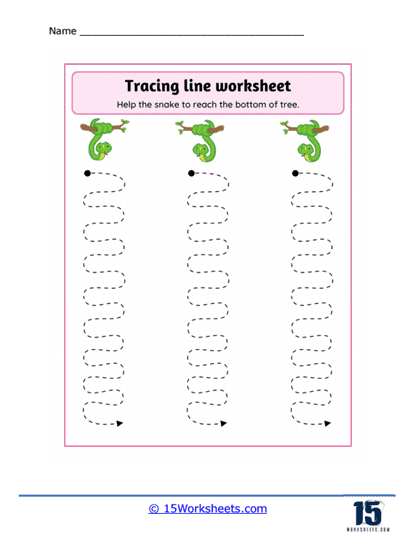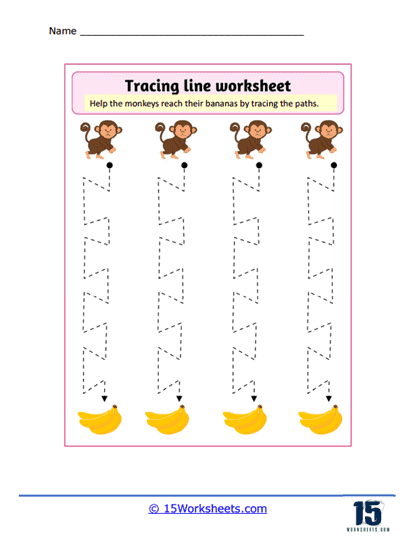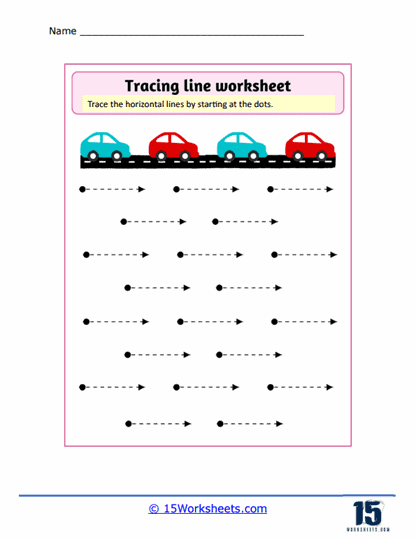Tracing Lines Worksheets
About These 15 Worksheets
Tracing lines worksheets are vital educational tools used in early childhood education to develop a child’s fine motor skills and prepare them for writing. They consist of various patterns and shapes that children need to trace over with a pen or pencil, hence the name. These worksheets often depict straight, curved, zigzag, and circular lines, among other patterns. As a child traces these lines, they are practicing the movements needed to write numbers and letters later on.
Educators and parents employ tracing lines worksheets primarily for children in pre-kindergarten or kindergarten. However, they can also be useful for elementary-aged children who require extra assistance in developing their fine motor skills or improving their penmanship. Besides their practical application in developing writing skills, these worksheets offer children an enjoyable activity that enhances their concentration and hand-eye coordination.
Fine motor skills refer to the coordination of small muscle movements, typically involving the synchronization of hands and fingers with the eyes. Fine motor skill development is essential for a child’s ability to do tasks that require precision, such as writing, buttoning clothes, or tying shoelaces. In this regard, tracing lines worksheets act as an exercise for these skills. As the child traces the lines, they are training their fingers to make precise movements. Over time, these repetitive movements will help children become more proficient at controlling their hand movements and eventually help them write more accurately.
These types of worksheets also play a pivotal role in improving a child’s hand-eye coordination. Hand-eye coordination refers to the ability of the vision system to coordinate the information received through the eyes to control and guide the hands to perform a task. Tracing lines on a worksheet requires children to follow a path with their eyes while their hands make corresponding movements. This exercise not only aids in developing better hand-eye coordination but also enhances a child’s spatial awareness, enabling them to understand and interact with the world around them.
These worksheets additionally prepare children for the task of writing. When children begin their formal education, they must learn to write letters and numbers, which requires them to create both straight and curved lines. By practicing tracing different types of lines, they become familiar with the hand movements required to write different characters. For example, tracing curved lines helps in writing letters like ‘O’, ‘C’, ‘S’, while tracing straight lines assists in writing ‘L’, ‘T’, ‘I’ etc.
Another beneficial aspect of tracing lines worksheets is their role in improving concentration. Completing a tracing worksheet requires a child to focus on the task at hand for a sustained period. By repeatedly doing these worksheets, children can improve their ability to concentrate, which will serve them well in their academic journey and life.
Creativity is another factor that can be enhanced through tracing lines worksheets. Often, these worksheets are colorfully designed or feature familiar shapes or characters to make them more engaging. Once the lines are traced, the children can be encouraged to color within the lines, promoting their artistic and creative abilities.
By incorporating these worksheets into a child’s routine, parents and educators can help improve their fine motor skills, hand-eye coordination, concentration, creativity, and readiness for writing. While this tool might seem simple on the surface, its benefits are profound, offering children the foundation they need to succeed in their academic journey.
How Tracing Lines Improves Your Handwriting
Tracing lines is a simple yet effective method for improving handwriting skills, particularly for young children or individuals learning to write. The act of tracing lines helps to develop and refine several skills that are crucial for good handwriting. Here’s how tracing lines can improve handwriting:
Fine motor skills development: Tracing lines requires the coordination and control of small muscles in the hands and fingers. This helps to develop fine motor skills, which are essential for performing various writing tasks.
Hand-eye coordination: Tracing lines involves using the eyes and hands in a coordinated manner. This helps to improve hand-eye coordination, a skill that is important for writing neatly and accurately.
Muscle memory: As individuals practice tracing lines, they develop muscle memory for the correct movements required for writing. This muscle memory can help make writing more automatic and fluent, leading to better handwriting.
Pencil control and grip: Tracing lines helps to teach proper pencil grip and control, which are essential for steady and accurate handwriting. Holding the pencil correctly and applying the right amount of pressure are key components of good handwriting.
Formation of letters and shapes: Tracing lines can help individuals learn the basic shapes and strokes that form the foundation of letters and numbers. By practicing these shapes and strokes, they become more confident and skilled in writing letters and numbers correctly.
Spatial awareness: Tracing lines helps to develop spatial awareness, as individuals learn to understand the relationship between lines, shapes, and spaces on a page. This skill is essential for maintaining consistent letter sizing, spacing, and alignment in handwriting.
Confidence and self-esteem: As individuals become more adept at tracing lines and see improvements in their handwriting, they are likely to experience a boost in confidence and self-esteem. This increased confidence can lead to further improvements in handwriting and overall academic performance.
To improve handwriting through tracing lines, individuals should practice consistently and progress from simple to more complex shapes and patterns. Combining tracing lines with other handwriting exercises, such as writing letters and numbers, can further enhance handwriting skills.

